Professional Ethics For the Health and Safety Professional
















































































































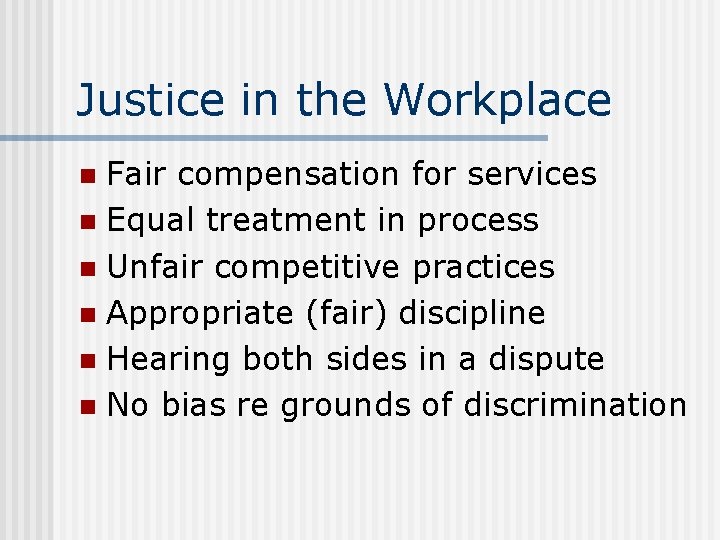

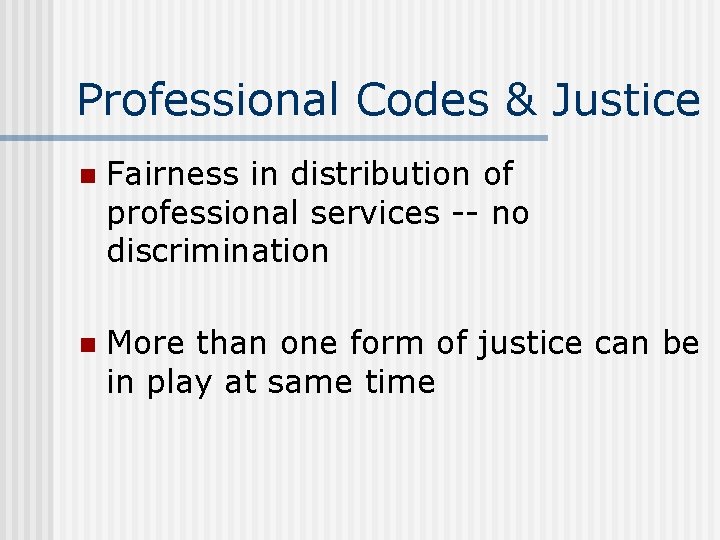

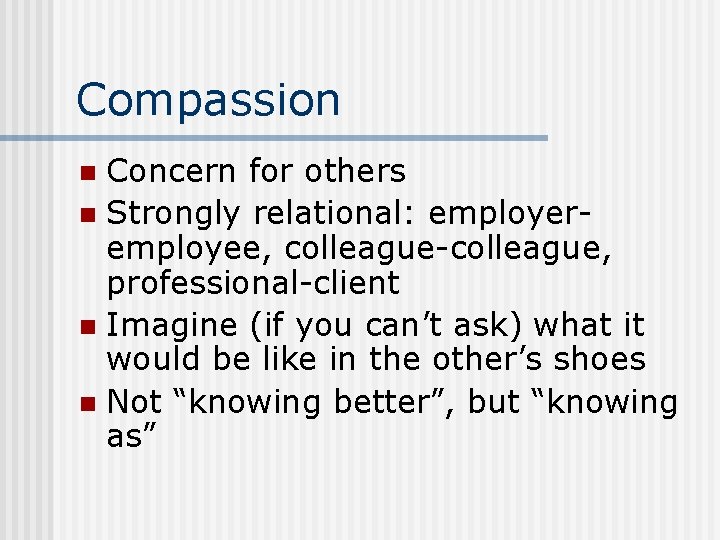
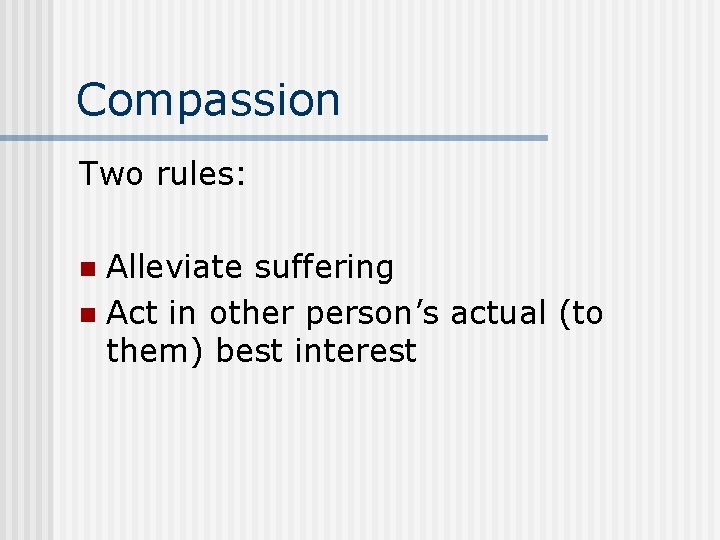
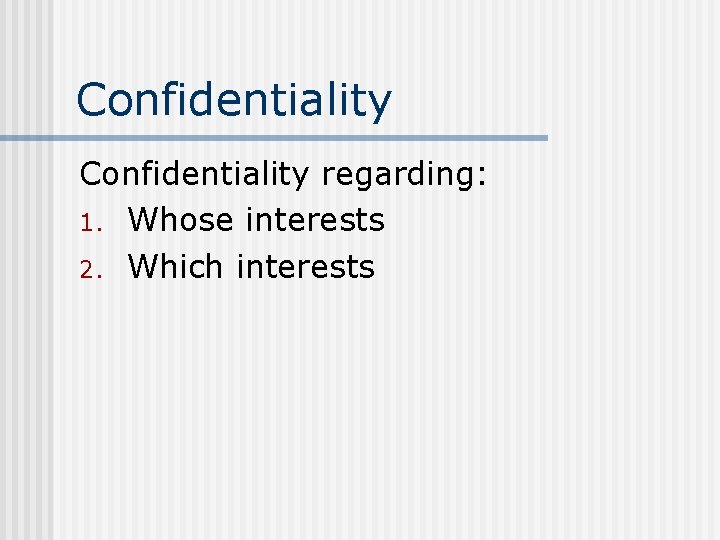
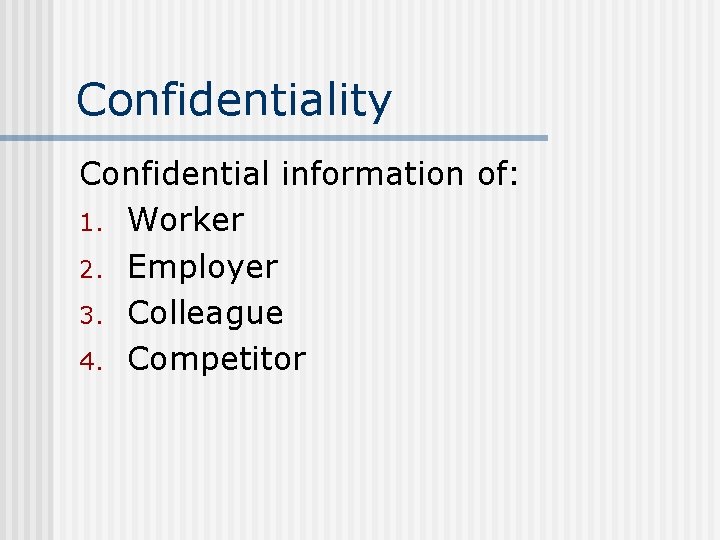
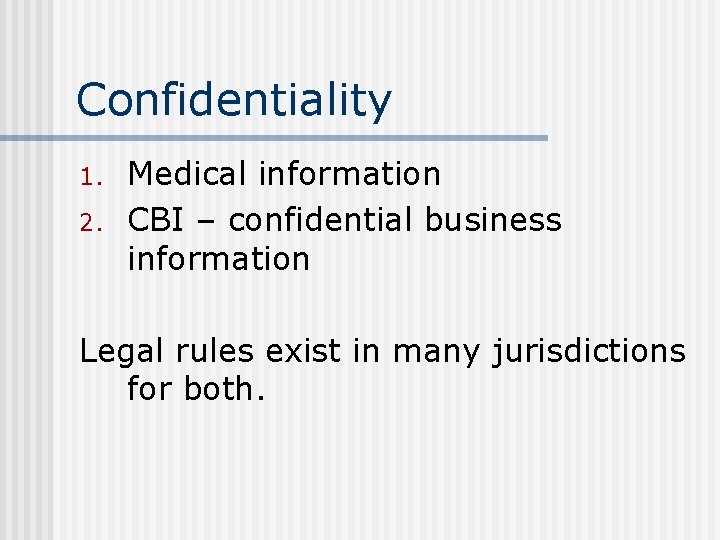
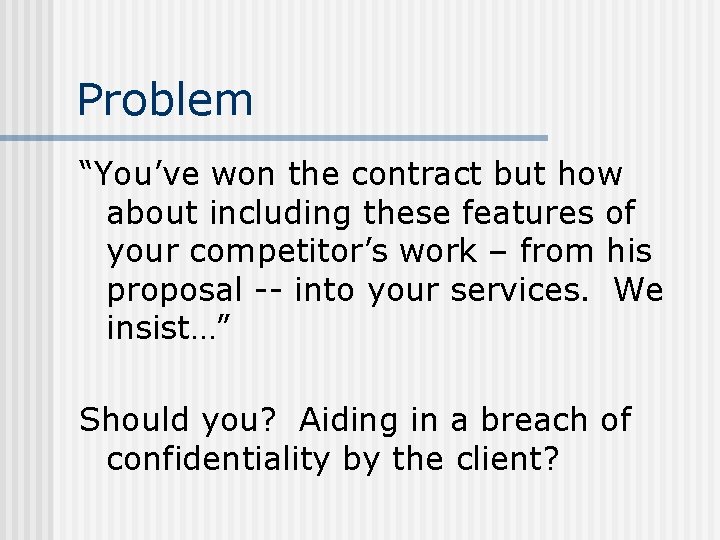
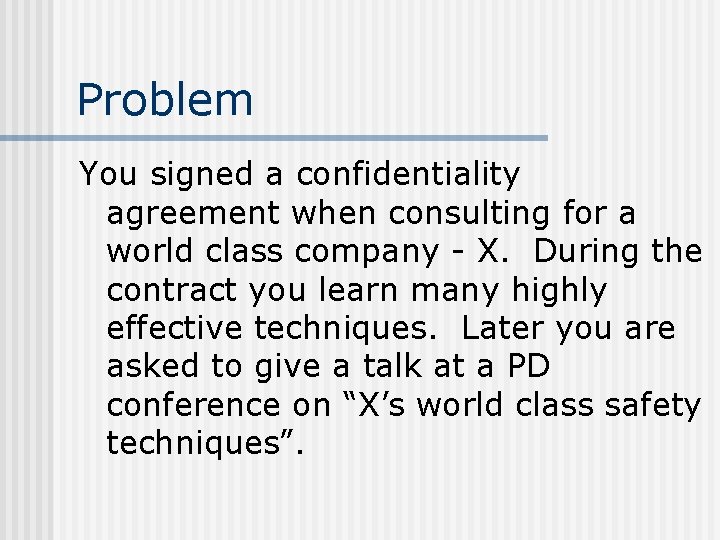
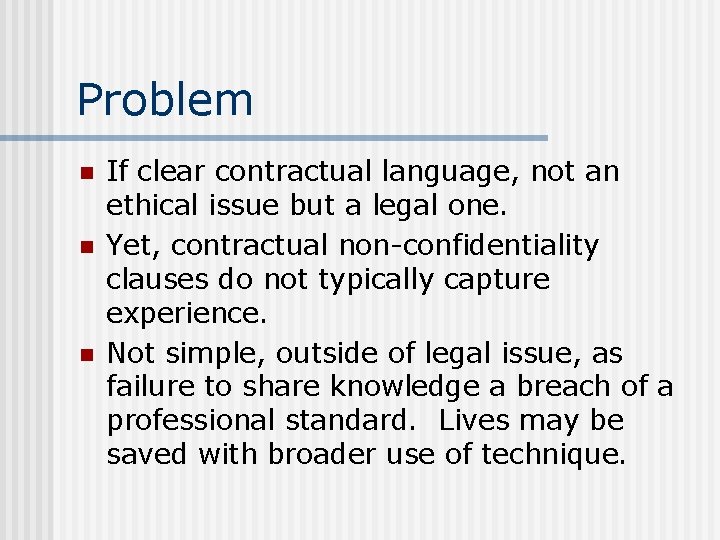
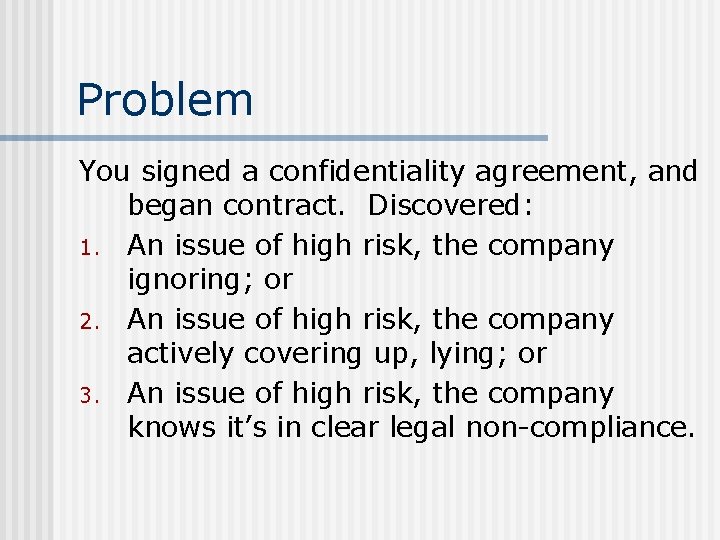
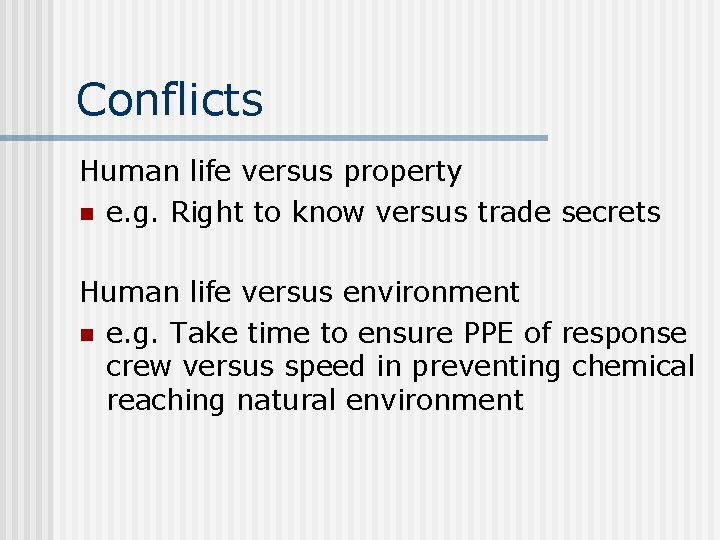

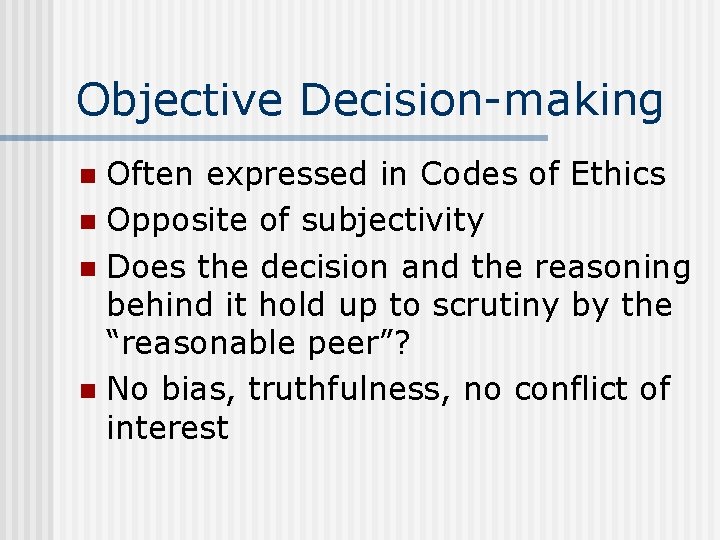
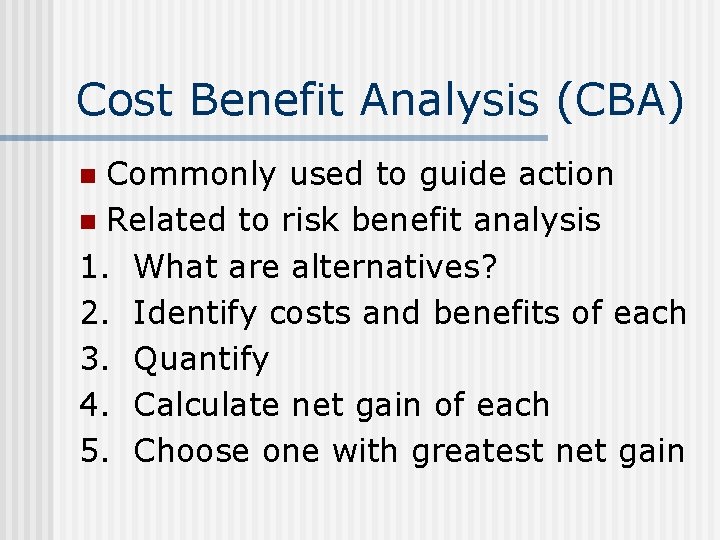
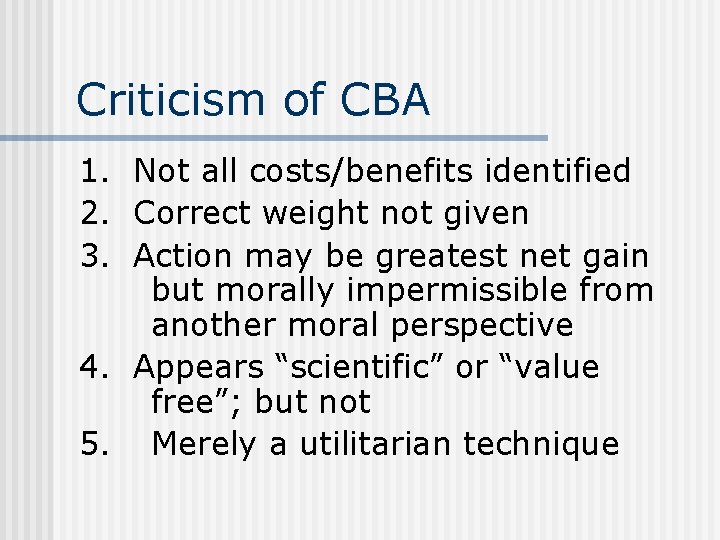
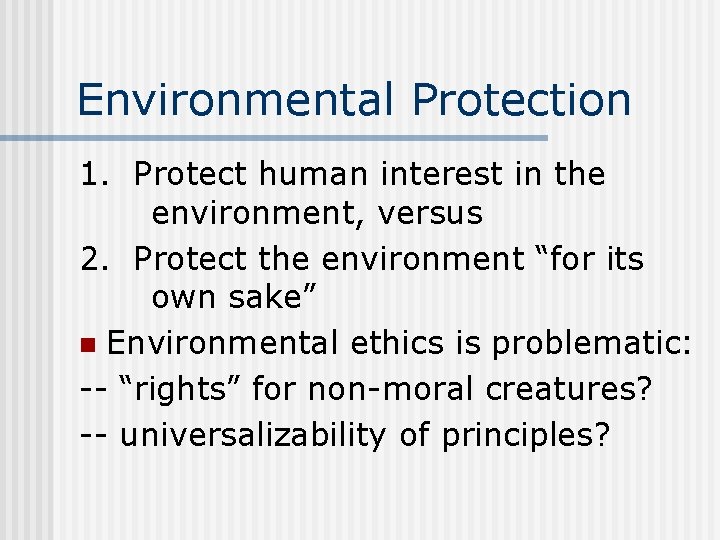
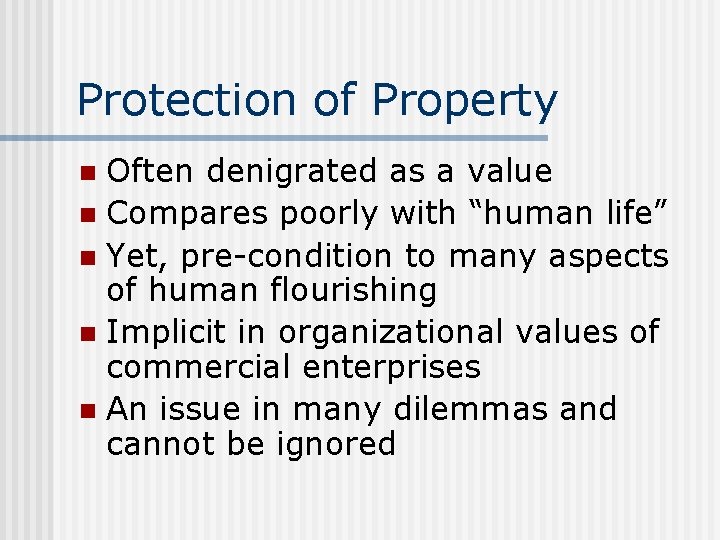
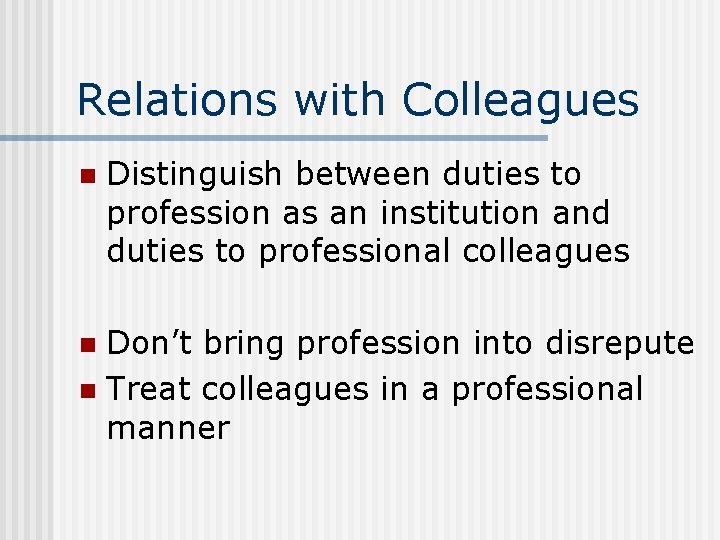
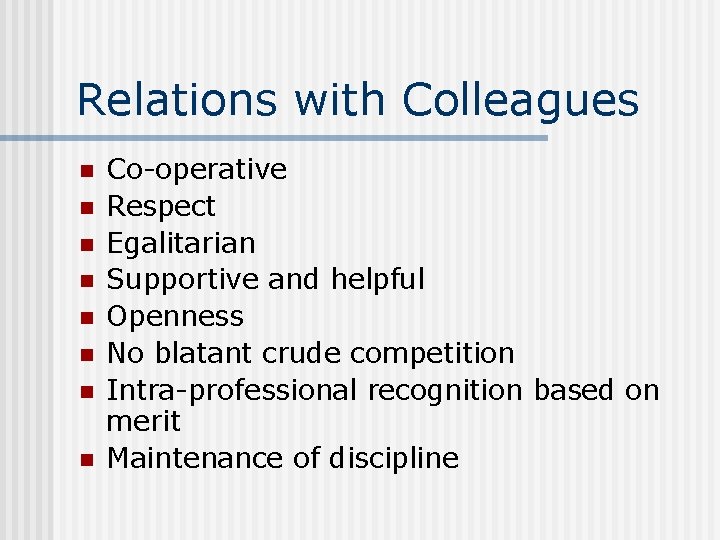
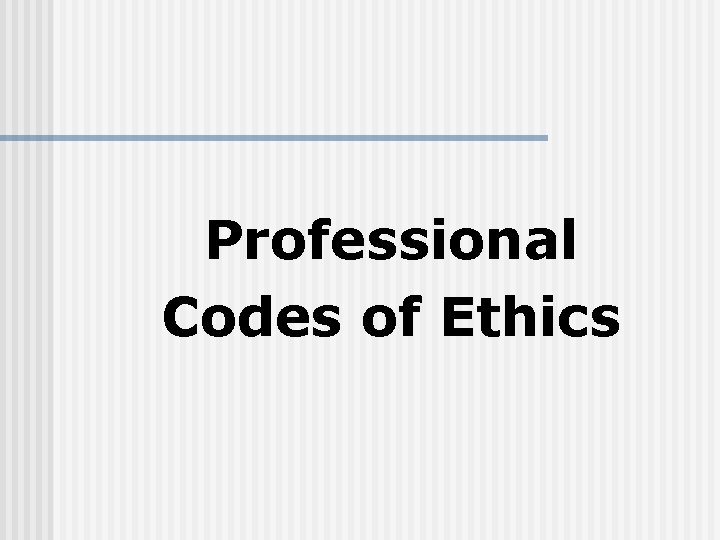

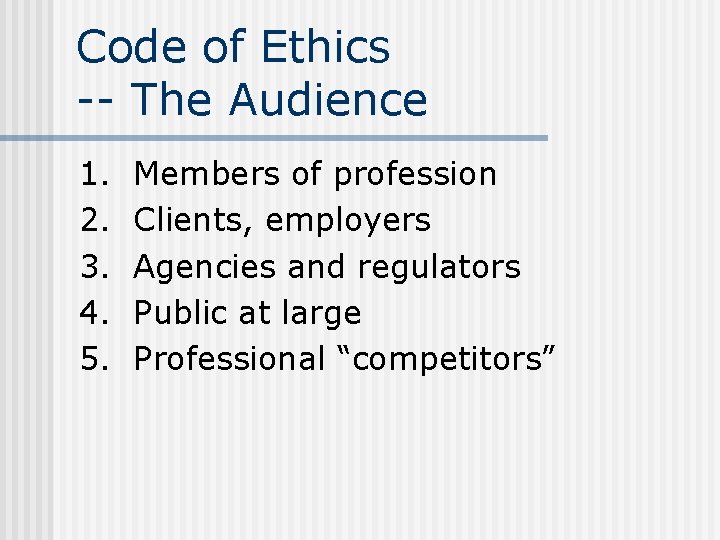
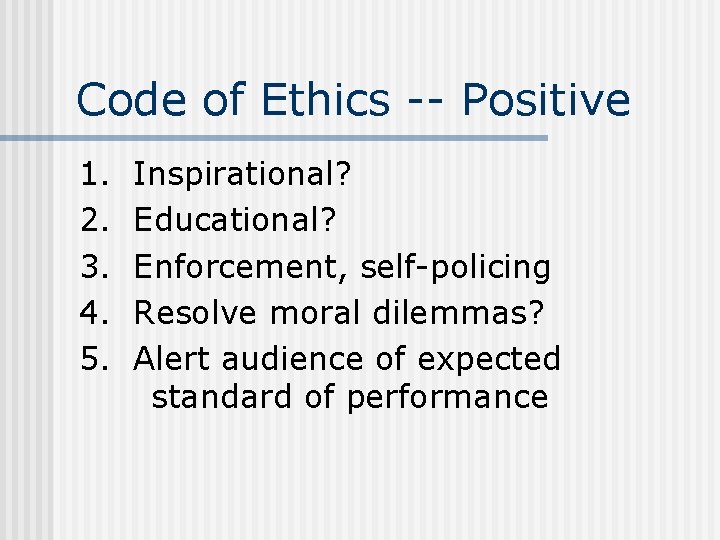
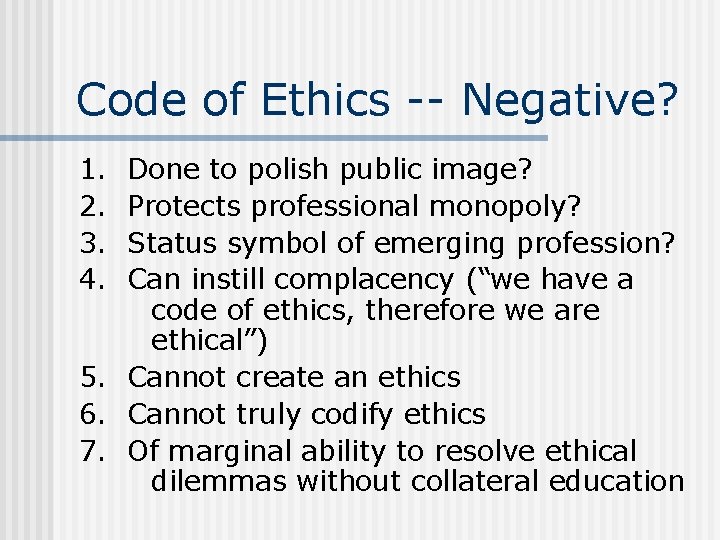
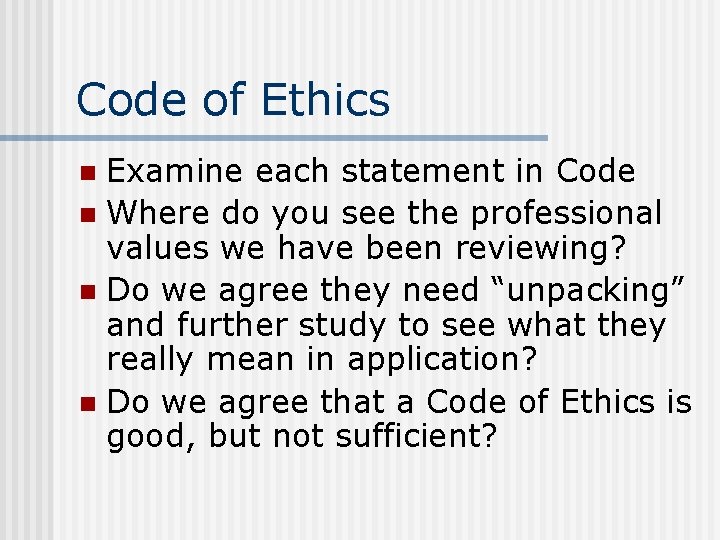
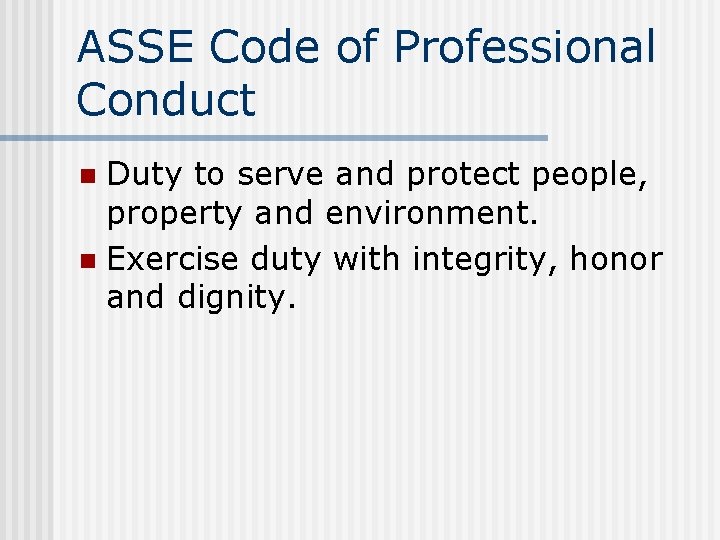
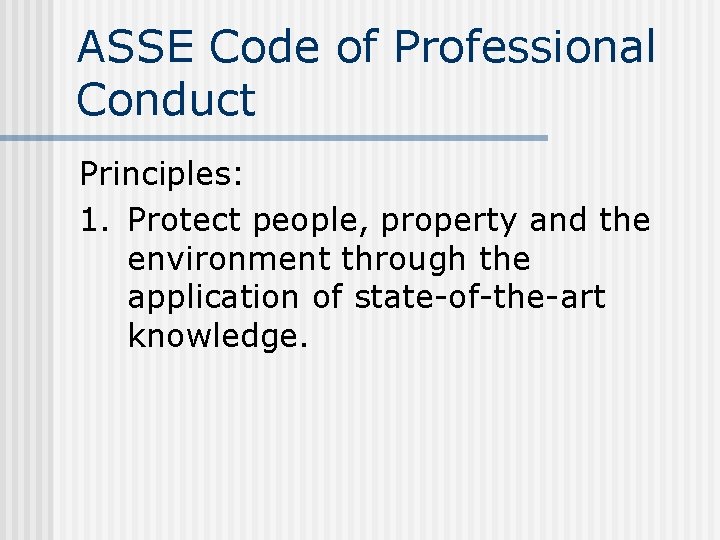
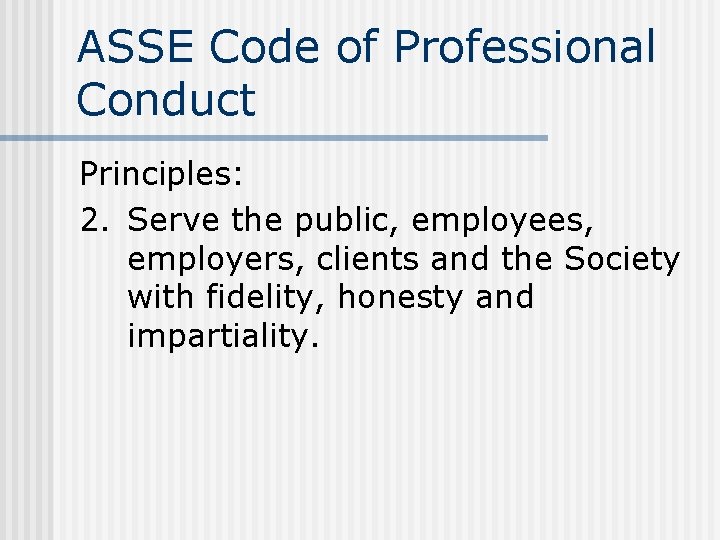
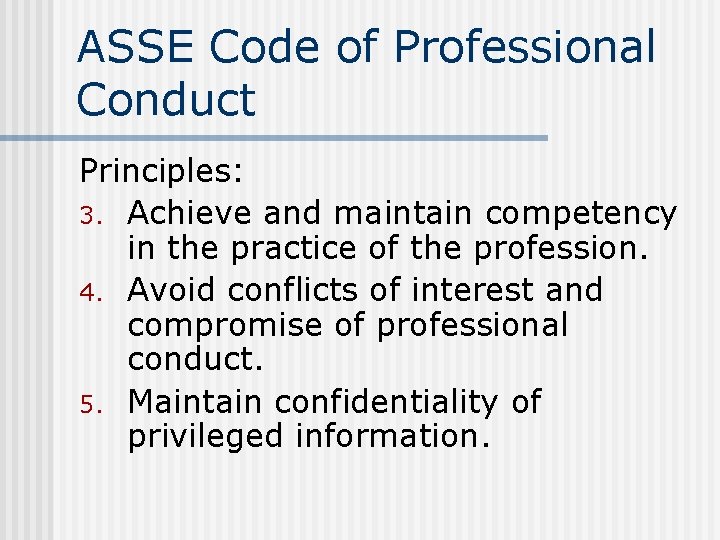
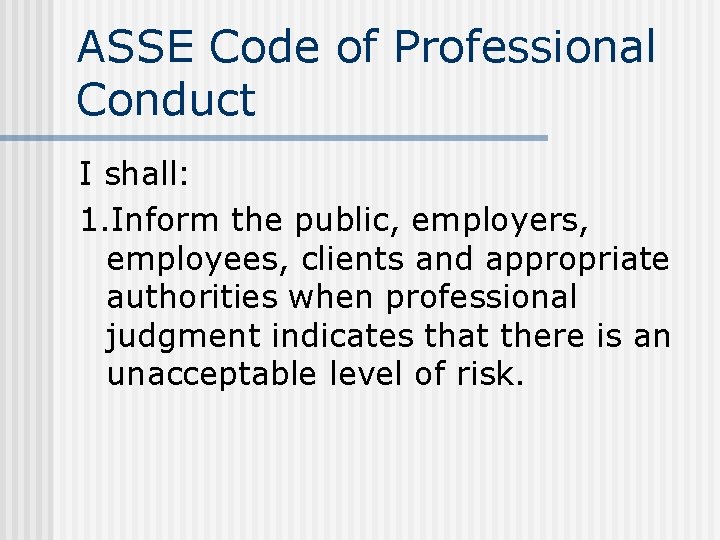
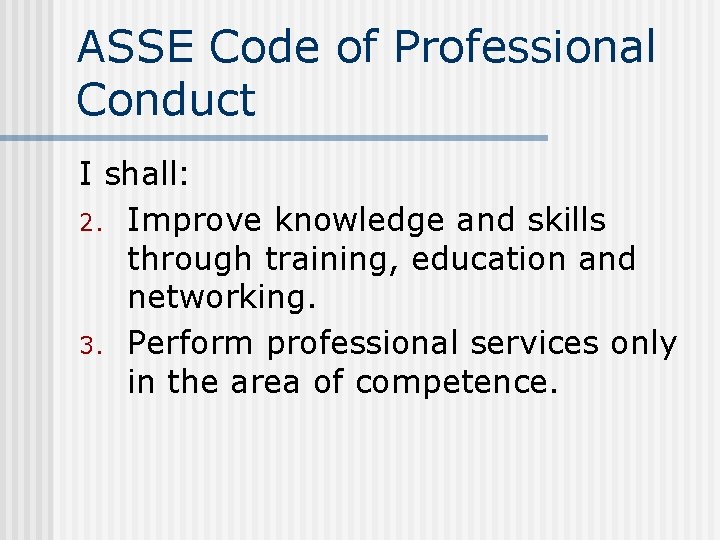
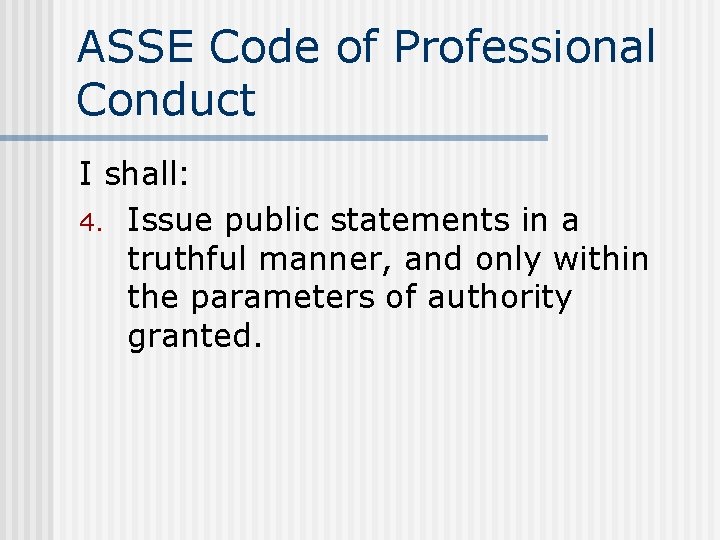
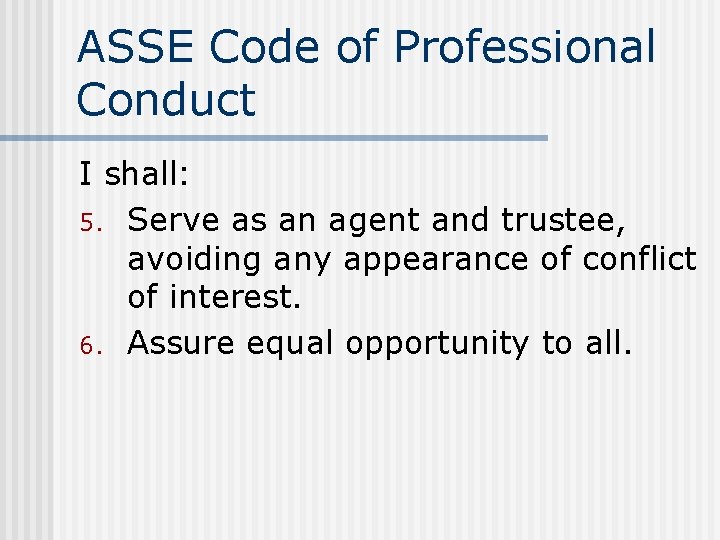
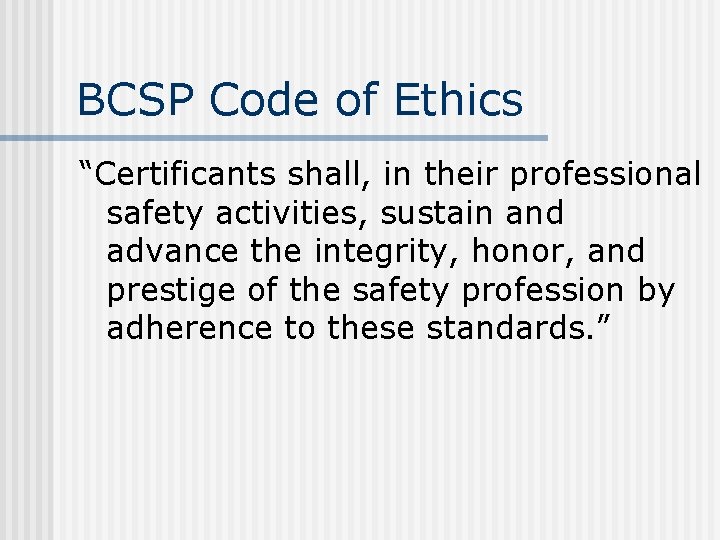
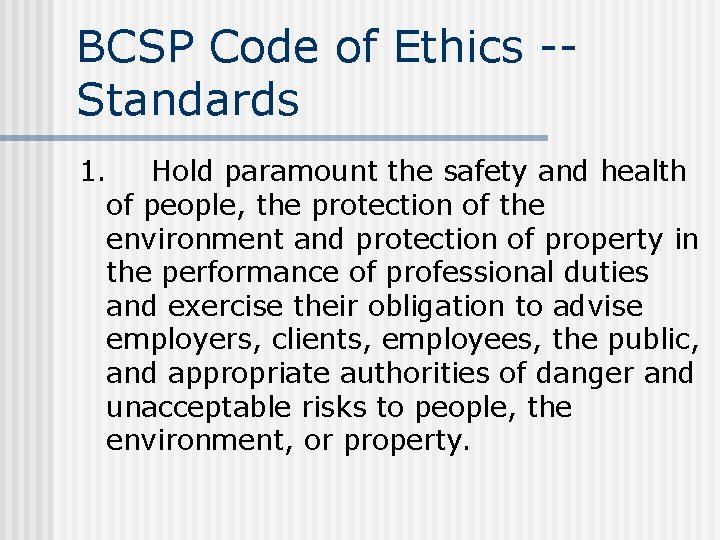
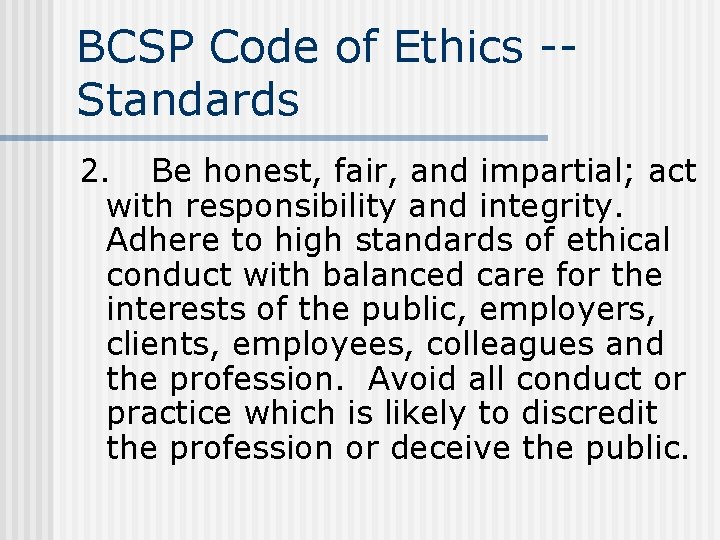
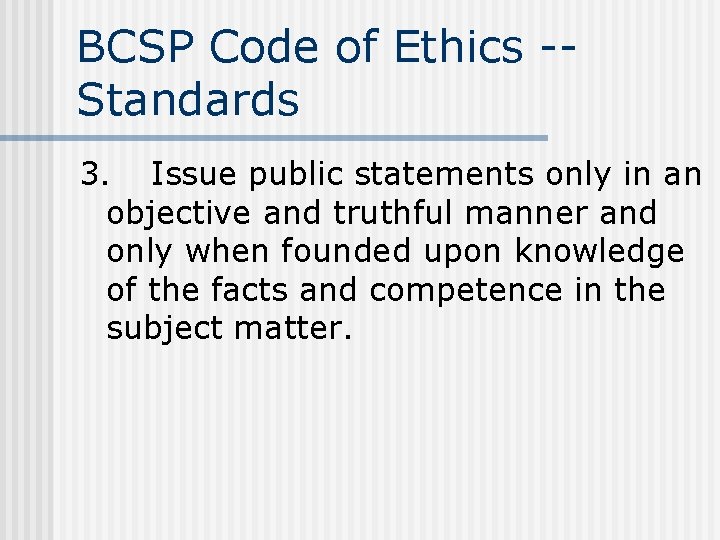
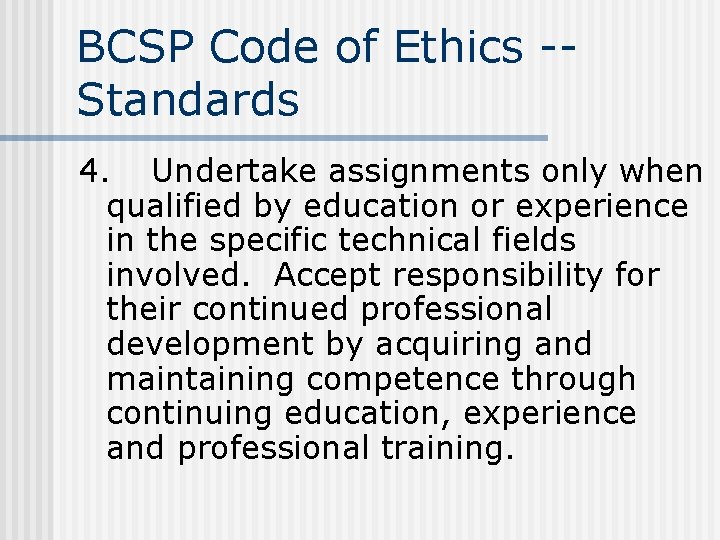
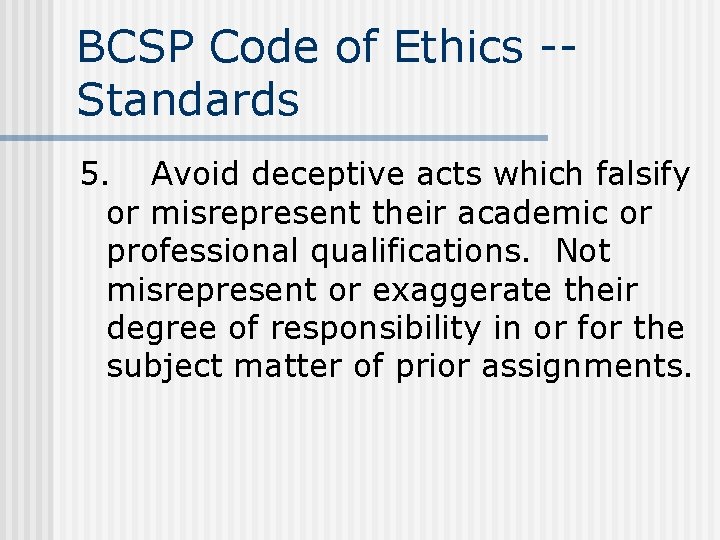
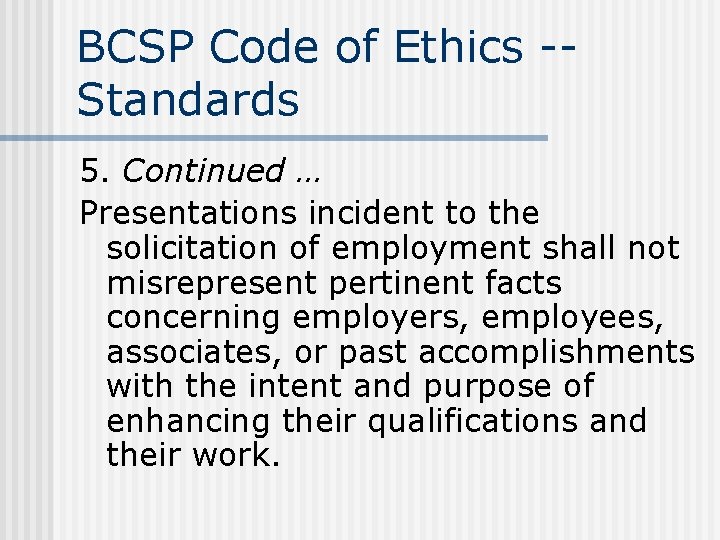
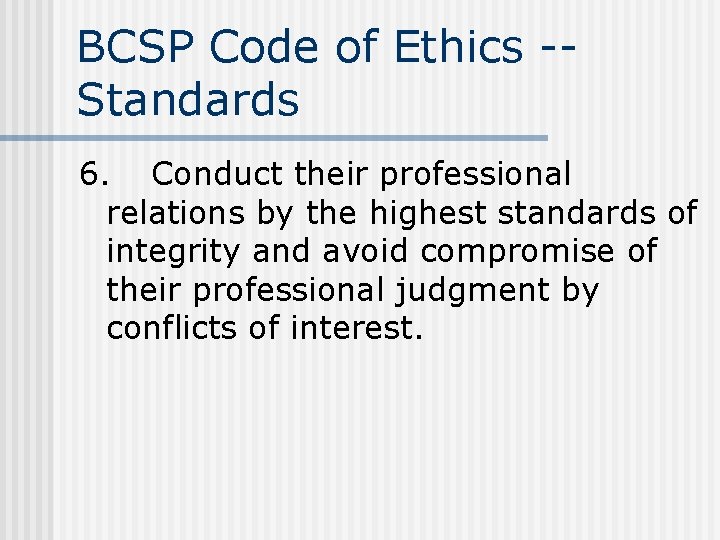
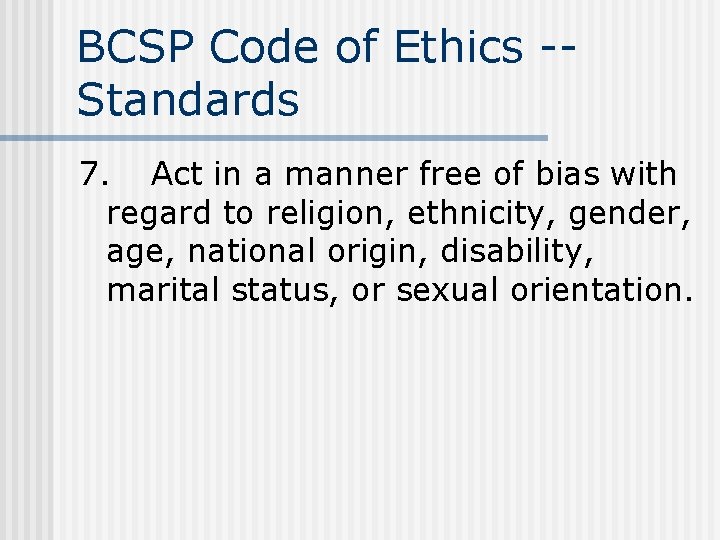
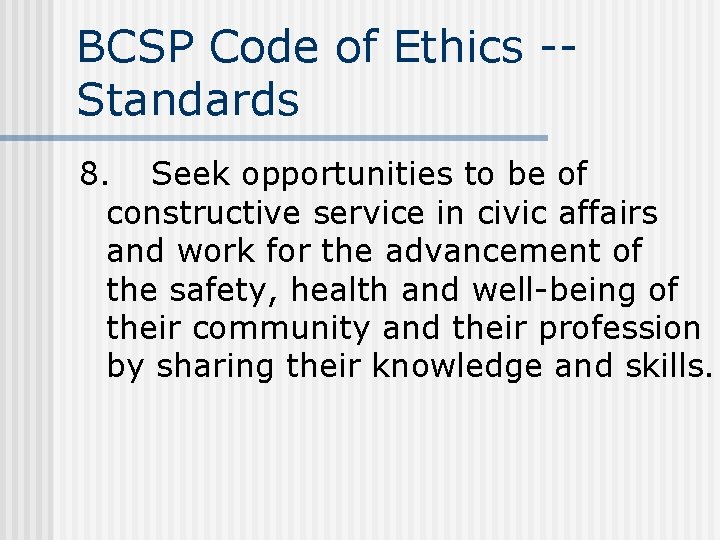
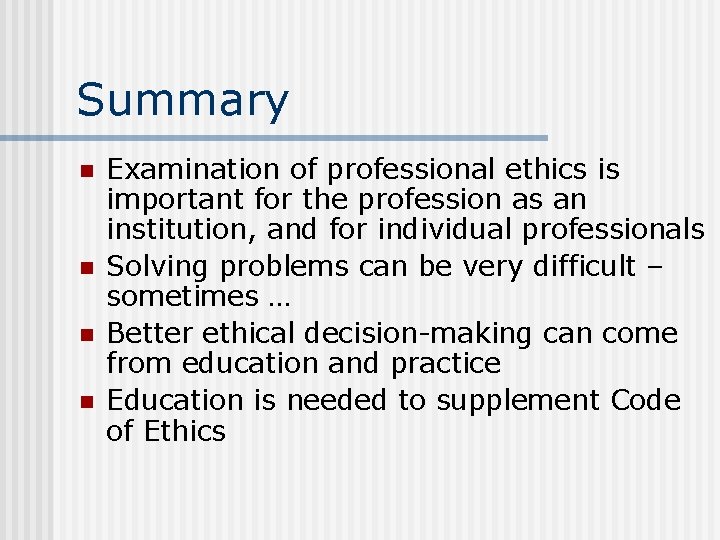
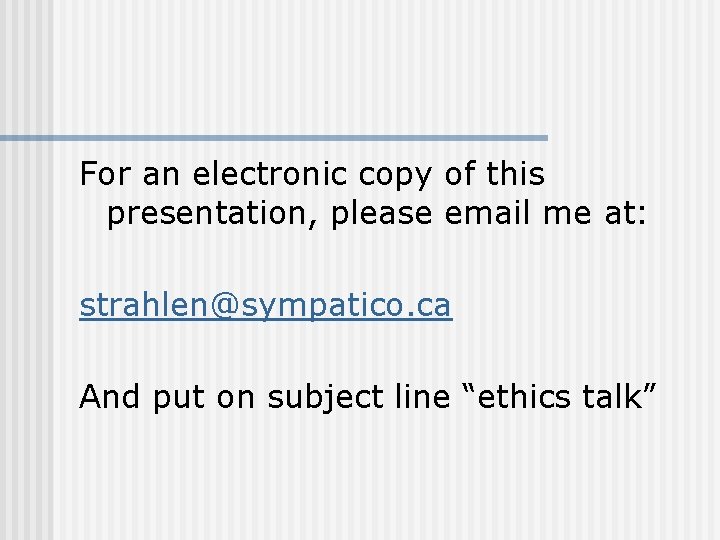
- Slides: 160

Professional Ethics For the Health and Safety Professional June 2004 ASSE Conference Las Vegas

Dr. Peter Strahlendorf B. Sc. , LL. B. , LL. M. , S. J. D. , B. E. S. , CRSP Associate Professor School of Occupational and Public Health Ryerson University Toronto, Canada

Pick One Ethics cannot be taught. You are able to sense what is right, good and just, and are motivated to act – or you are not. 2. While people differ in their abilities, most people can improve their ethical decision-making through education and practice. 1.

A Personal Challenge to the Science-Oriented Do we think differently when thinking scientifically than when thinking ethically? n Can you find scientific answers to the questions “what is reasonable? ”, or “what is fair”? n This is part of the “art” of OHS practice. n

Professional Ethics What is a “profession”? n What is “ethics”? n What is “professional ethics”? n Ethical theories n Thinking about professional ethics n Professional values n Codes of Ethics n

Do you agree? n It is always wrong to intentionally take an innocent life?

Do you agree? n The right course of action is to weigh the consequences of action and choose the action that leads to the greatest good for the greatest number?

Two Valid Moral Positions The first is “Kantianism” n Kant: Right or wrong regardless of consequences n The second is “Utilitarianism” n Utilitarianism: Right or wrong depending on consequences n Most people agree with both positions n

Dilemma The hijacked plane with 200 people is approaching a building with 50, 000 people n Vote! Will you shoot down the plane? n

Dilemma You cannot subscribe to both principles in the case. n A true moral dilemma n Which position has the greatest weight in the circumstances? n

Orientation Aim to show several different ways to think through a problem in professional ethics, rather than merely describe what professionals say are their problems (sociology of ethics).

“Profession” “Ethics” “Professional Ethics”

Profession n All professions are occupations, but not all occupations are professions Can take a broad or narrow view of what is a “profession” A “self-regulated occupational group capable of legally prohibiting others (including incompetent or unethical members) from practising” is a narrow view

Based Primarily on : “Morality and the Professional Life” Cynthia A. Brincat Victoria S. Wike Prentice Hall, 2000 ISBN 0 -13 -915729 -8

Profession 1. Group identity 2. Shared education, training -requirements for admission 3. Special uncommon knowledge 4. Knowledge used in the service of others… positive social need 5. Involves individual judgment, (some) autonomy in decisions 6. Adherence to certain values 7. Penalties for substandard performance

Profession Matter of degree … there are many “emerging professions”. n Obstacle in the way of the OHS professional is the diverse nature of practice with competing coprofessionals. n

Profession You are not a professional until you are a member of a group of colleagues who have articulated a set of standards and values and can enforce them, at the very least, by exclusion from the group.

“Professionalism” 1. Skill, competency in work 2. Relational element – work will be beneficial to others Work itself doesn’t have moral status n Execution of work has moral status n

Recognizing when We’re in the Realm of Ethics Watch the language: n Right and wrong -- Actions n Good and bad -- Motives, methods, goals

Professional Ethics n Purpose… Helps professional decide when faced with a problem that raises a moral issue n Complexity … Can be many people, with many issues involved … may be involved history to the issues … may be an issue WHO decides, not just WHAT decided.

Ethics and Morality – making choices with reasons n Ethics – the study of HOW the choices are made, ie “ethics is the study of morality” n n Often use “ethics” and “morality” interchangeably

General vs Professional n General Ethics – individual as member of community, broader range of issues, “top down” principles n Professional Ethics – moral expectations specific to the occupational group, tend to focus on concrete “bottom up” cases

Morality and Ethics n Professional Morality – what we do in our occupational lives n Professional Ethics – the study of what we do in our professional lives

Ethics and Law – the authority is external n Ethics – the authority is internal n Much of law, but not all, is based in morality n Sometimes law is unethical n Much of what is ethical is unaddressed by legal rules n

Professional Ethics and Law There is a moral duty to obey the law (with some caveats) n Professional ethics covers more issues than the law n One can be unethical without behaving illegally n Rare – ethically must resist the law n

Professional Ethics and Law Be very careful not to embark in an exercise in ethical analysis when there is a clear legal rule in the situation that trumps the entire process of ethical analysis.

Professional Ethics and Law Be very careful not to assume that there is a legal rule for every situation. Often the gaps between legal rules require one to switch to an ethical analysis.

Ethics Descriptive ethics – “What IS” n Prescriptive ethics – “What OUGHT to be” n We do not seek to study professional ethics as a sociologist would, but to assist with choices about what one ought to do.

Descriptive Ethics 2002 British study by Burgess and Mullen: 77% of hygienists had witnessed ethical misconduct by colleagues within last 5 years.

Descriptive Ethics Burgess and Mullen study. Most common cases: 1. Plagiarism 2. Confidentiality of data 3. Faked data 4. Criticizing colleagues for gain 5. Holding back, disguising data 6. Destruction of data 7. Not reporting incident deliberately

Descriptive Ethics Patricia Logan 2001, USA. Reported reasons for misbehavior, hygienists: 1. Economic pressure 2. Transition from employee to consultant results in compromises 3. Working in foreign countries 4. Lack of legal standards 5. Working on contingency basis 6. Decrease in job security

Descriptive to Prescriptive Two very different ways of reasoning. Descriptive, or scientific, studies of professional ethics help us identify issues that need to be included in Code of Ethics and in educational programs. Gives us our “case studies”.

Prescriptive Ethics “What OUGHT to be” n The words used are different… goodbad, right-wrong, just-unjust n Thought processes use values, goods, virtues, rules, ethical theories, moral reasons, moral explanations, and moral decisions. n

Why the Interest in Professional Ethics? 1. 2. 3. 4. As occupations become more specialized, the ethical issues become more specialized Professional societies have increased efforts to establish ethical codes to guide members Increasing public scrutiny, lack of traditional deference Regulatory oversight, public protection

Moral Reasoning

Machinery of Prescriptive Ethics 1. 2. Rules – e. g. “always tell the truth” Values – e. g. Integrity The two are intimately related.

Prescriptive Ethics n Judgments should be “universalizable” or “generalizable” Judgments should apply to like cases and not be case-specific or subjective “If it applies to me now, it should apply to anyone else in a similar position. ”

Moral Relativism Ethical values are relative to time, place and culture n Moral beliefs are subjective and arbitrary n “It’s all a matter of personal opinion” n Decisions shift easily n

Moral Absolutism Ethical values completely objective n Unchangeable, universal, no exceptions n Comparatively inflexible n n Neither position tenable.

Objectivity Codes of ethics require objectivity, which means that there are principles and values outside of the individual that the members of the community share and that individuals will be measured against.

Objectivity “Thinking reasonably is thinking morally. ” Samuel Johnson

Reasonable Person -- Peer What would the reasonable peer do in the circumstances? Reasonable person: mature, sane, sober, well-informed, wellintentioned, open-minded, calm, detached but empathetic … Reasonable peer – add expertise.

Moral Decisions Reasons explain a decision: n Reason +… = Decision n Explanation… System of reasons

A Moral Reason Is general, not particular or contingent n reason, not instinct or external authority n not selfishness n moral value, not economic, legal, social value n

Moral Explanation n At least one of the reasons justifying a decision is a moral reason. n This identifies, but does not evaluate a moral explanation.

Dilemma Explanation 1 Reason + … Decision 1 n Explanation 2 Reason + … Decision 2 n n May or may not be a MORAL dilemma

Non-Moral Dilemma 1. I should work late and finish the work I promised I’d finish. 2. I should leave and go to a party because I like parties and want to enjoy myself. 1. = universalizable, non-selfish, moral value (integrity, responsibility, promises…) 2. = non-moral reasons and decision.

Moral Dilemma Moral Explanation 1 Moral reason +… = Decision 1 n Moral Explanation 2 Moral reason + … = Decision 2 n

Resolution of Dilemmas n n Some dilemmas are resolved because they are not moral dilemmas. Some MORAL dilemmas can be resolved through a creative third alternative that satisfies both moral outcomes. Or, possible to sequentially act on each one. Or, evaluation will show which is strongest moral explanation and decision.

Evaluate Moral Reasons STRONG n relevant to decision n concern with person(s) most affected by decision n focussed on values of central importance WEAK n tends to be irrelevant n not concerned with person(s) most affected by decision n emphasizes peripheral values

Evaluate Moral Explanations STRONG n use several perspectives (consequences, motives, rights, virtues, etc. ) n considers all persons n many values WEAK n narrow focus n selective concern n fewer values

Ethical Theories

A Moral Theory Is a broad perspective which: helps us decide which element of a moral problem is most important (e. g. consequences, rights, goods, virtues, etc. ) n helps us resolve conflicts between rules and between values. n

How We Come by Moral Theories Family n Religion n Culture n Experience and reflection n Education n

Moral Action Theories -“Doing” n n consequences for community rights of individuals duties of individuals What correct course of action should I take?

Moral Status Theories “Being” Virtue, character n Care, relationships n Narrative, history and plans n n What kind of person should I be?

Human Goods Life, health n Knowledge n Play n Art n Friendship n n “Self-evidently good”

Human Goods n Human life considered to be fundamental good, pre-conditional good n Human life is not measurable, “life is priceless” n Leads to dilemmas in the workplace

Consequentialism n n n The greatest good for the greatest number an act is right only if it tends to result in the greatest net good all acts are potentially permissible; depends on consequences all persons count equally difficult to determine which consequences, what probability, what weight? May sacrifice individuals for greater good

Consequentialism Utilitarianism is major consequentialist theory n Not the only one n May aim for human goods as a matter of duty, without a strict utilitarian calculation n

Rights-Based Theories n n n n Right = justified claim on someone Right-holder may or may not claim right Which rights? Which rights more fundamental? Or pressing? An act is morally right if it respects and upholds rights Respects individuals, bearers of rights Good of community may be sacrificed for right of individual

Duty-Based Theories n n n n Duty = obligation, responsibility Considers motive or intention of decision-maker, plus nature of act, rights, consequences Good motive, means are acceptable, nature of act is good Consequences are of secondary consideration Recognizes complexity Value of individual is important May sacrifice community good for the sake of individual duty

Kantianism Often viewed as a duty-based theory n But rights emerge from duty to treat others with respect n X has a duty to Y n Y has a right that X must respect n E. g. right to know and duty to tell n

Kantianism “Deontological” = prior to action n Decide if an act is right or wrong without looking at consequences n Motivated by reason alone n “Universal moral imperatives” n Reason tells us that something is always right … all can follow without contradiction n

Kantianism Duty to: n “Always tell the truth” n “Always avoid taking an innocent life” n “Always treat others as ends in themselves and never as means solely” Basis of respect for persons

Virtue-Based Theories n n n n n Act for the sake of virtue, or as a virtuous person would A virtue is a good character trait or disposition Tendency to act in a way that promotes human good or human flourishing Vice is a bad character trait More people affected by virtue than fewer More virtues expressed than fewer BUT, some virtues may be more important than others Whole person considered, not isolated acts Virtues may be culturally specific

Virtues Examples: n n n n Benevolence Justice Loyalty Friendliness Courage Honesty Integrity

Moral Reasoning Part 2

Using Moral Theories Not what is decided, but HOW it is decided n Theories identify values and interpret values n A person’s moral theory explains why they hold the values they do n

Professional Ethics n n n Professional’s work involves decisionmaking One’s own decisions, decisions of others Relational component to professional work Must understand reasons and decisions of others Must make own decisions in context of others’ decisions

Moral Framework Provide a Moral Explanation by: Appeal to a Rule (rightness, wrongness) n Using a Theory (perspective) n Applying a Value n n …in order to make a Decision

Moral Framework Analysis … decision is already made Decision-making … decision still to come Analysis n Decision Rule Theory Value Decision-making

Professional Values and Virtues

Common Professional Values Integrity n Honesty n Promise keeping n Loyalty n Competence n

Common Professional Values Respect for persons n Justice n Compassion n Confidentiality n

Comparison Medicine and law: services relate primarily to persons n Engineering and other science based professions: services relate primarily to things n OHS professional: services relate to both; more complex n

Comparison Medicine and law: solo practice or partnership n Engineering: employee in organization n OHS professional: Consultant, employee, official -- Wider issues of responsibility -- Relations, context, conflicts, values not always the same n

Integrity n n n Most common value in professional codes Keystone value “Consistent commitment to moral commitments” “Structural integrity” = our moral character is the same, whole, integrated Can’t commit to conflicting standards and have integrity

Integrity and Honesty Related values n Honest people “have integrity” n To be true to a system of values, one must be honest n Integrity requires being committed to honesty n Honesty is a way of valuing integrity n

Problem Brilliant, first class OHS professional … but he suggested a scheme many years ago … we would advise clients only solution to a certain regulation was purchase of a very expensive storage tank for which we and our third partner (unknown to client) would have sole vending rights …

Integrity and Honesty Rules: n admit errors n refrain from false/misleading pretences … competency n advise clients truthfully n don’t fool with the numbers n don’t steal others’ work -- plagiarism

Problem A few years ago, heard that “Tony”, a former student was claiming that he was a professor in OHS at our university in his consulting adverts. Investigated: His flyer said “engaged with instruction at Ryerson in OHS for 4 years”. . . Verbally interpreted as “teaching”.

Problem “We like to order more copies of your training manual” Never heard of the company; not a client. “How did you get original training manuals? ” “Oh, Mr X used them when he did training for us last year. ”

Integrity and Promise Keeping Lack of integrity/honesty = “say X, mean Y” n Integrity: follow through on promises n Be careful about promises as may jeopardize integrity n OHS consultant: promise more than one can deliver? n

Problem Bait and Switch: Albert Einstein does the pitch but Gomer Pyle shows up to do the OHS work ….

Problem Consultant promises to: 1. Get you to world class safety in 3 months 2. Get your “accidents to zero” 3. Ensure compliance Or head office wants you, the employee, to agree to the above.

Integrity and Loyalty/Dependability “Avoid actions that degrade integrity of profession” = loyalty to profession n Be loyal to profession’s goals n If committed to profession, be committed to profession’s goals n Dependability is a display of loyalty n Loyalty to employer’s goals n

Disloyalty to Profession’s Goals OHS professional: Advocates high risk behaviour? n Chooses incompatible values to promote? n Displays risky behaviour in personal life? n

Problem Member of a professional OHS group, certified by that group, set up his own designation and offered short courses for $ for people to obtain the designation. In his advertising, he said the new designation was “just as good” as the original, only half as expensive and 1/10 the time.

Conflicts Involving Integrity n n n Commitment to our commitments What if 2 or more commitments in conflict? Creatively find alternatives where not at odds Often values not in true conflict, but interpretation of values May be a greater commitment to some values than others; compromise necessary in world of scarce resources

Problem “Protect life, environment, and property. ” “Do not compromise. ” Possible? Are the values of equal priority when commitments come into conflict?

“Whistleblowing” Disclosure of wrong-doing n Conflict: protection of life versus loyalty n Honesty versus promise keeping n

Problem Your report shows areas of high risk, non-compliance, errors etc. Your superior or client rewrites the report, eliminating your data and conclusions, or buries the report. Duty to warn in conflict with ….

“Whistleblowing” Explore all options to avoid conflict n Creativity and clarification often reduce conflict n Compromise between values often possible n Distinguish between internal versus public whistleblowing n

“Whistleblowing” Some cases of public whistleblowing excessive and involve motives of spite, revenge, self-justification n Best companies have addressed whistleblowing and protect it… provide internal mechanisms n Hard cases requiring self-sacrifice actually rare, involve high risk n

Competency n n n Part of the meaning of “professional” is to possess special, uncommon knowledge and skills. Don’t have to be best in profession, just above threshold. Redundant to put in Codes of Ethics? , as incompetent person should not have been granted status, or should have been weeded out?

Competency – Duty to Maintain Far more important is a duty to keep up, to maintain competence. n As technology and knowledge improve, the bar of professional practice is raised. n “Standing still” results in eventual incompetence. n

Problem A few years ago, a well known member of the profession stated publicly that a failure to adopt behavior-based safety was professional malpractice (hence, unethical). Agree?

Problem Insofar as BBS is “behavioral psychology”, we would be missing out on cognitive psychology, developmental psychology, evolutionary psychology, etc.

Solution Professional groups should be leery of declaring that certain theories and techniques are “true” or established. n Better approach is the PDC approach where competing and novel ideas are not barred. Gradual, contingent acceptance is the pathway. n

Areas of Competence Extremely important in a profession: 1. where people come from a wide variety of disciplines 2. there are many areas of specialization, and 3. there are other professions adjacent

Problems 1. 2. 3. You are asked to provide expert evidence in an area that you are not truly an expert. Head office wants all locations to institute a certain safety technique about which you know little. You observe a colleague offering services in areas you know he or she has little competence.

Respect for Persons n n All persons are due basic respect and a dignity which is to be respected Kant: “treat every person as as end, and not as a means solely” Other people are not merely a method for our own goals; others have their own goals Others may be used with informed consent … contracts are moral

Respect for Persons n n Distributive justice - distributive criterion for basic respect and dignity is personhood Respect on a continuum - desert beyond the basic minimum Respect for certain aspects of others: integrity, wisdom, honesty, skill, experience Basis of respect for professional peers

Respect for Persons n n Professional - show basic respect for every person, even if not felt Not hypocrisy Many professional codes refer to a right to “respectful care” on part of client/patient Confidentiality, privacy, autonomy, choice, informed consent, selfdevelopment, empowerment

Problem OHS professional transferred to company’s gold mine in South Africa. A large portion of miners were HIV positive, and life expectancy averaged 2 years. Company’s unstated position that spending on safety uneconomical due to short life span of workers? Solution?

Justice as “fairness” n Involves “balancing”, “weighing” and conforming to a standard n Moral psychology: people have a “sense of justice” n Four forms of justice: Commutative, distributive, retributive and procedural n

Commutative Justice Unfair to leave a harm uncorrected. n X does harm to Y. Take from X to compensate Y so as to address the imbalance. Basis of law of torts. n Fairness lies in putting people back in the position they would have been in had the harm not been done n

Distributive Justice n n n Fairness in distributions Distribute X according to pre-agreed criterion Y (need, ability to pay, merit, status, personhood) We distribute DVD players on the basis of ability to pay, university degrees on the basis of merit, and human rights on the basis of personhood

Retributive Justice Balance severity of punishment with severity of harm for which punishment imposed n Severe punishment for severe wrongs, light for slight n Workplace discipline should be fair in such a balanced fashion. n

Procedural Justice Fairness in decision-making about others’ interests n Unbiased decision-maker n Hear both sides n Mutual disclosure, notice n Treat both sides equally n Balance between the parties n

Justice Treat like cases alike n Justice equality, Justice = equity n Equal and unequal treatment could both be “fair” n “Rewarding” and “punishing” can both be “fair” n Not always concerned with legal version(s) of justice n

Justice in the Workplace Fair compensation for services n Equal treatment in process n Unfair competitive practices n Appropriate (fair) discipline n Hearing both sides in a dispute n No bias re grounds of discrimination n

Professional Codes & Justice Accountability -- punish professionals who violate standards n Duty to report colleagues’ wrongdoing for retributive justice to be carried out n Fairness: warning, reprimand, suspension, expulsion from group n

Professional Codes & Justice n Fairness in distribution of professional services -- no discrimination n More than one form of justice can be in play at same time

Compassion n n A professional is compassionate No “relational sensitivity” = no professional life Compassion is a feeling No obligation to feel compassion, but an obligation to act compassionately Some believe professional is “dispassionate”

Compassion Concern for others n Strongly relational: employeremployee, colleague-colleague, professional-client n Imagine (if you can’t ask) what it would be like in the other’s shoes n Not “knowing better”, but “knowing as” n

Compassion Two rules: Alleviate suffering n Act in other person’s actual (to them) best interest n

Confidentiality regarding: 1. Whose interests 2. Which interests

Confidentiality Confidential information of: 1. Worker 2. Employer 3. Colleague 4. Competitor

Confidentiality 1. 2. Medical information CBI – confidential business information Legal rules exist in many jurisdictions for both.

Problem “You’ve won the contract but how about including these features of your competitor’s work – from his proposal -- into your services. We insist…” Should you? Aiding in a breach of confidentiality by the client?

Problem You signed a confidentiality agreement when consulting for a world class company - X. During the contract you learn many highly effective techniques. Later you are asked to give a talk at a PD conference on “X’s world class safety techniques”.

Problem n n n If clear contractual language, not an ethical issue but a legal one. Yet, contractual non-confidentiality clauses do not typically capture experience. Not simple, outside of legal issue, as failure to share knowledge a breach of a professional standard. Lives may be saved with broader use of technique.

Problem You signed a confidentiality agreement, and began contract. Discovered: 1. An issue of high risk, the company ignoring; or 2. An issue of high risk, the company actively covering up, lying; or 3. An issue of high risk, the company knows it’s in clear legal non-compliance.

Conflicts Human life versus property n e. g. Right to know versus trade secrets Human life versus environment n e. g. Take time to ensure PPE of response crew versus speed in preventing chemical reaching natural environment

Conflict of Interest n Usually refers to conflict between professional duties and personal interests n Can also refer to conflict between professional duties/values and other values

Objective Decision-making Often expressed in Codes of Ethics n Opposite of subjectivity n Does the decision and the reasoning behind it hold up to scrutiny by the “reasonable peer”? n No bias, truthfulness, no conflict of interest n

Cost Benefit Analysis (CBA) Commonly used to guide action n Related to risk benefit analysis 1. What are alternatives? 2. Identify costs and benefits of each 3. Quantify 4. Calculate net gain of each 5. Choose one with greatest net gain n

Criticism of CBA 1. Not all costs/benefits identified 2. Correct weight not given 3. Action may be greatest net gain but morally impermissible from another moral perspective 4. Appears “scientific” or “value free”; but not 5. Merely a utilitarian technique

Environmental Protection 1. Protect human interest in the environment, versus 2. Protect the environment “for its own sake” n Environmental ethics is problematic: -- “rights” for non-moral creatures? -- universalizability of principles?

Protection of Property Often denigrated as a value n Compares poorly with “human life” n Yet, pre-condition to many aspects of human flourishing n Implicit in organizational values of commercial enterprises n An issue in many dilemmas and cannot be ignored n

Relations with Colleagues n Distinguish between duties to profession as an institution and duties to professional colleagues Don’t bring profession into disrepute n Treat colleagues in a professional manner n

Relations with Colleagues n n n n Co-operative Respect Egalitarian Supportive and helpful Openness No blatant crude competition Intra-professional recognition based on merit Maintenance of discipline

Professional Codes of Ethics

Code of Ethics Clarifies values and rules n Facilitates group cohesion n Instills necessary public confidence n Used as framework for discipline n

Code of Ethics -- The Audience 1. 2. 3. 4. 5. Members of profession Clients, employers Agencies and regulators Public at large Professional “competitors”

Code of Ethics -- Positive 1. 2. 3. 4. 5. Inspirational? Educational? Enforcement, self-policing Resolve moral dilemmas? Alert audience of expected standard of performance

Code of Ethics -- Negative? 1. 2. 3. 4. Done to polish public image? Protects professional monopoly? Status symbol of emerging profession? Can instill complacency (“we have a code of ethics, therefore we are ethical”) 5. Cannot create an ethics 6. Cannot truly codify ethics 7. Of marginal ability to resolve ethical dilemmas without collateral education

Code of Ethics Examine each statement in Code n Where do you see the professional values we have been reviewing? n Do we agree they need “unpacking” and further study to see what they really mean in application? n Do we agree that a Code of Ethics is good, but not sufficient? n

ASSE Code of Professional Conduct Duty to serve and protect people, property and environment. n Exercise duty with integrity, honor and dignity. n

ASSE Code of Professional Conduct Principles: 1. Protect people, property and the environment through the application of state-of-the-art knowledge.

ASSE Code of Professional Conduct Principles: 2. Serve the public, employees, employers, clients and the Society with fidelity, honesty and impartiality.

ASSE Code of Professional Conduct Principles: 3. Achieve and maintain competency in the practice of the profession. 4. Avoid conflicts of interest and compromise of professional conduct. 5. Maintain confidentiality of privileged information.

ASSE Code of Professional Conduct I shall: 1. Inform the public, employers, employees, clients and appropriate authorities when professional judgment indicates that there is an unacceptable level of risk.

ASSE Code of Professional Conduct I shall: 2. Improve knowledge and skills through training, education and networking. 3. Perform professional services only in the area of competence.

ASSE Code of Professional Conduct I shall: 4. Issue public statements in a truthful manner, and only within the parameters of authority granted.

ASSE Code of Professional Conduct I shall: 5. Serve as an agent and trustee, avoiding any appearance of conflict of interest. 6. Assure equal opportunity to all.

BCSP Code of Ethics “Certificants shall, in their professional safety activities, sustain and advance the integrity, honor, and prestige of the safety profession by adherence to these standards. ”

BCSP Code of Ethics -Standards 1. Hold paramount the safety and health of people, the protection of the environment and protection of property in the performance of professional duties and exercise their obligation to advise employers, clients, employees, the public, and appropriate authorities of danger and unacceptable risks to people, the environment, or property.

BCSP Code of Ethics -Standards 2. Be honest, fair, and impartial; act with responsibility and integrity. Adhere to high standards of ethical conduct with balanced care for the interests of the public, employers, clients, employees, colleagues and the profession. Avoid all conduct or practice which is likely to discredit the profession or deceive the public.

BCSP Code of Ethics -Standards 3. Issue public statements only in an objective and truthful manner and only when founded upon knowledge of the facts and competence in the subject matter.

BCSP Code of Ethics -Standards 4. Undertake assignments only when qualified by education or experience in the specific technical fields involved. Accept responsibility for their continued professional development by acquiring and maintaining competence through continuing education, experience and professional training.

BCSP Code of Ethics -Standards 5. Avoid deceptive acts which falsify or misrepresent their academic or professional qualifications. Not misrepresent or exaggerate their degree of responsibility in or for the subject matter of prior assignments.

BCSP Code of Ethics -Standards 5. Continued … Presentations incident to the solicitation of employment shall not misrepresent pertinent facts concerning employers, employees, associates, or past accomplishments with the intent and purpose of enhancing their qualifications and their work.

BCSP Code of Ethics -Standards 6. Conduct their professional relations by the highest standards of integrity and avoid compromise of their professional judgment by conflicts of interest.

BCSP Code of Ethics -Standards 7. Act in a manner free of bias with regard to religion, ethnicity, gender, age, national origin, disability, marital status, or sexual orientation.

BCSP Code of Ethics -Standards 8. Seek opportunities to be of constructive service in civic affairs and work for the advancement of the safety, health and well-being of their community and their profession by sharing their knowledge and skills.

Summary n n Examination of professional ethics is important for the profession as an institution, and for individual professionals Solving problems can be very difficult – sometimes … Better ethical decision-making can come from education and practice Education is needed to supplement Code of Ethics

For an electronic copy of this presentation, please email me at: strahlen@sympatico. ca And put on subject line “ethics talk”